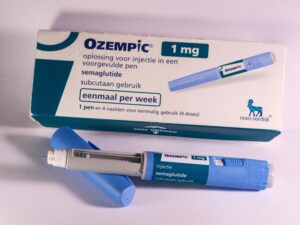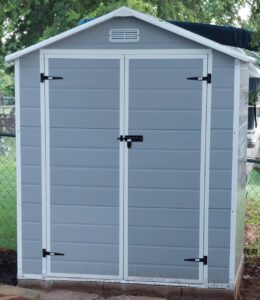By Brooke DeLong
“Thanks so much for what you do,” I said to a Creek County medic standing behind me in line at the store, “there’s no way I could do it.” She said, “You’re welcome. I don’t look down on anyone who says that.” We agreed every person has a place in the world and I joked about keeping my distance from medical emergencies but how I would love to write about the logistics of their job.
A few days later, I contacted Larry Pickens who works for Creek County Ambulance, special projects and we lined up a ride-along. I was asked to arrive at 0900 (that is 9 in the morning for us folks who don’t speak in military time) and Mr. Pickens showed me around the Sapulpa station.
It was a busy place with three employees working in billing, a room for dispatch, EMT’s (Emergency Medical Technicians) and Paramedics getting trucks ready and other office staff. In fact, more than seventy people are employed by Creek County Ambulance. There are two sub-stations located in Bristow and Drumwright while another in Kiefer is under construction.
The ambulances were stocked full of supplies, clean and charging. Electric is used for the mechanical gurney that loads and unloads itself (no more old school manual stretchers) among other items on board. I even noticed something called a LUCAS which is a battery-operated chest compressor.
There are usually six 24-hours trucks running at a time and one 12-hour truck. This means the station has bunks where the medics can rest between calls much like fire stations. When dispatch receives a call they use EMD (emergency medical dispatching) guidelines before sending a unit out. This determines if the lights and sirens are used or not.
I was welcomed with open arms by paramedics Dax Chapman and Amanda Manier. I hopped in the back of the van-style ambulance and wasn’t sure how to buckle the 5-point harness which is customary for safety. Luckily someone was there to help. As I looked around I couldn’t help but wonder about all the ambulance had been through and the stories it could tell.
The units work as a team to cover most of Creek County so we moved on to Bristow and waited for directions. Sure enough, in a few minutes, we were asked to do a transport, a non-emergency call. We picked up a patient at a clinic and drove to a hospital in Tulsa. I am extremely happy to report that is all the action I had for the ride-along.
As I sat in the front seat of the ambulance in the hospital’s unloading zone watching all the medics unload their patients, I became even more aware that these people, working to save lives are probably some of society’s most unsung heroes.
I was able to visit with Dax and Amanda about their experiences. They have seen it all from car wrecks, dog bites, child abuse, drownings along with a lot of minor incidents. “How do you deal with the worst calls?” I asked. Dax said he tries to “think of the silver lining” such as getting to a patient in time for his or her organs to be donated if that was their choice. Amanda unapologetically said after a very rough call she asked for time off and received a few days with no questions asked. Taking care of themselves is of utmost importance and should be a priority, no doubt.
The medics take their jobs seriously. Amanda went on to say later, “They (patients) are not customers. This is not a restaurant. Sometimes we may be the only thing between life and being in the ground.” That is a staggering thought. Oftentimes, they don’t know the outcome of the patient’s story after they are transported to the hospital. All they can do is their absolute best with the time they have.
Their occupation is not always safe. The medics sometimes have no idea what kind of situation they are getting into. It could be a domestic violence call where tensions are running high or a drug overdose where a patient is being combative. Not to mention hoping drivers yield to their sirens to help keep the roads secure. Yet, they still answer the calls.
I firmly believe it takes a special calling to be a first responder. Now more than ever, this team of people, including dispatchers, could use our prayers and support. Please don’t be shy about thanking them and remember to slow down or stop when you see lights or hear sirens on the road. This will ensure everyone stays as safe as possible.
Every third Thursday of the month at 2 p.m. any person who receives state assistance may attend a twenty-eight-minute session at the station’s classroom covering car seat safety, including how they are to be installed properly. Attendees receive a free car seat.
Thank you to all the men and women who step into this role and for taking the time to answer my questions. I hope you and I never need their services but we should feel good knowing they are just a phone call away.
“Next to creating a life, the finest thing a man can do is save one.”
~Abraham Lincoln










